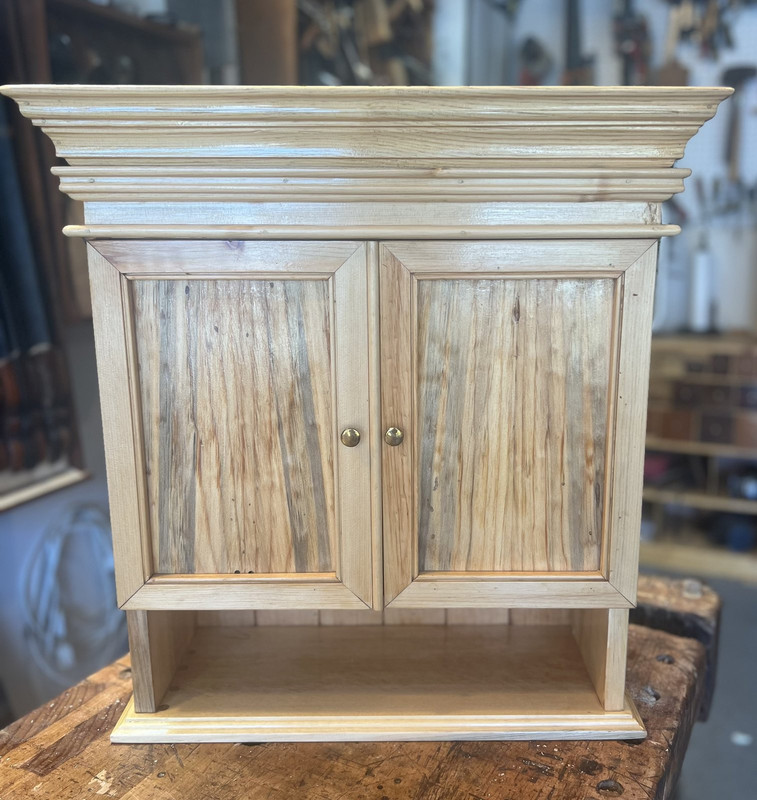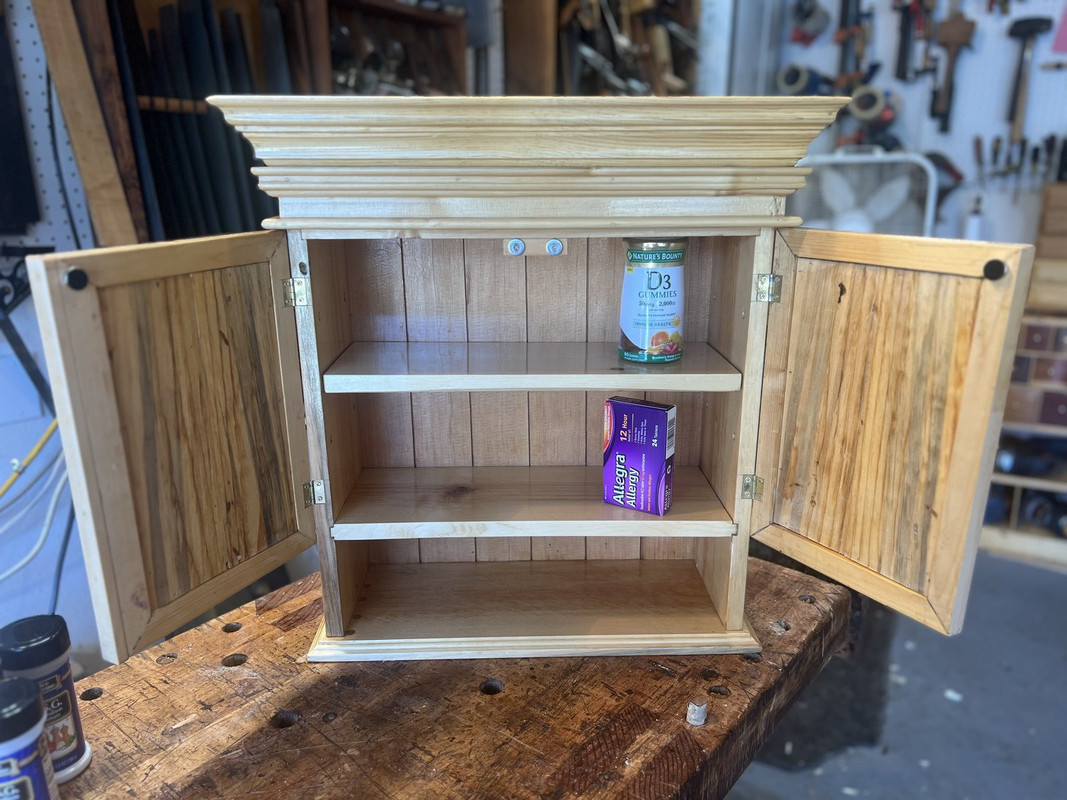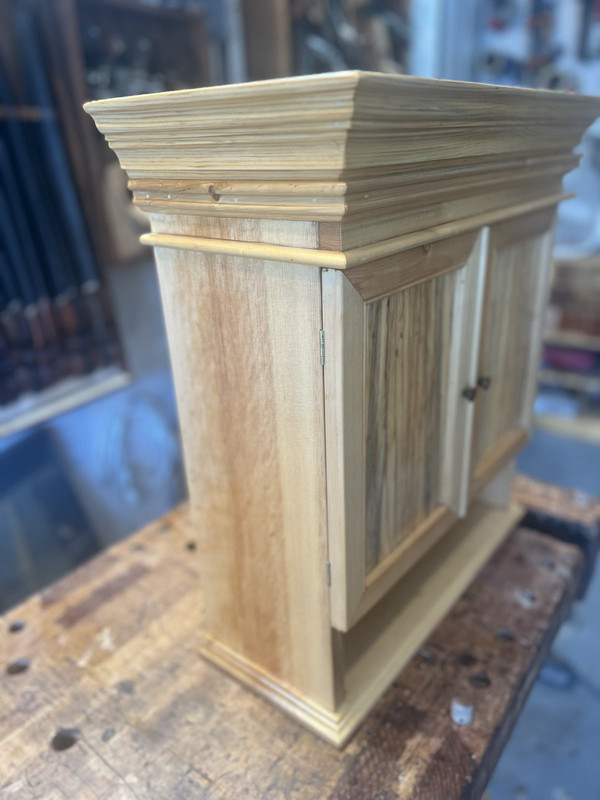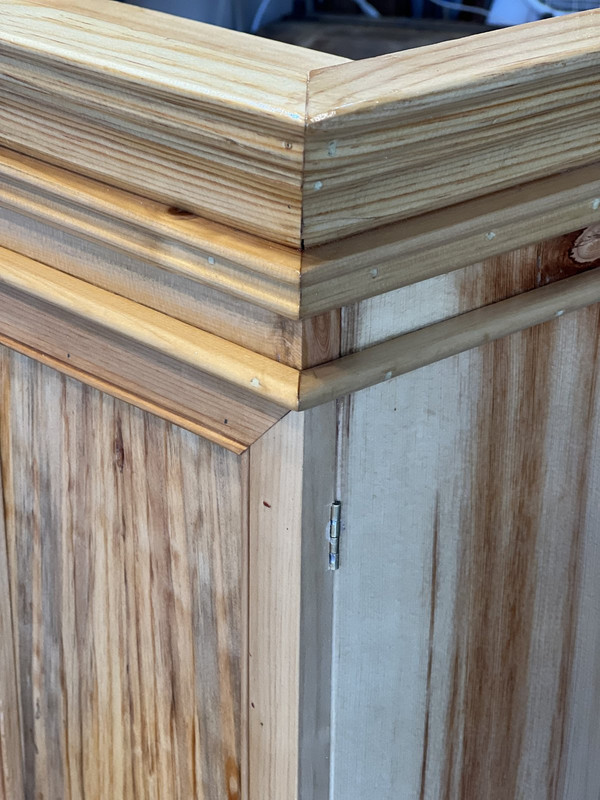I do a lot of early American style/reproduction pieces that involve complex moldings that can’t be done with commercially available router/shaper bits. I enjoy doing these using a combination of machinery to remove the bulk of the waste and hollow and round planes to create the final molding profiles. Here’s some pictures/descriptions of a recent build:
Big fan of Matthew Bickford’s book “Moldings In Practice”. One of the few I actually keep in the shop not the library. Has lots of great historically accurate examples. I scan the profiles I like onto my computer and then re-size them for the piece I’m making. Then print out a hard copy and transfer it to card stock as a template.
Here’s a profile traced on the end grain of the pine I will use for the molding.
First step for me is removing the bulk of the waste. I don’t have a table saw but use a bandsaw for this process.
As Bickford’s book very well explains, the key step in the molding process is creating square rabbits that the H&R planes can run along to create the curved profiles. I do this on a router table. I typically try to leave flat reference surfaces on both edges of the molding stock so that it’s easier to run through the router table, however when I cut the waste on the bandsaw for this piece, I left this end a little too skinny, but there is a flat reference surface on the majority of the stock on both sides. This is one operation where I miss having a tablesaw- which rarely happens.
With the rabbits established, was moving the molding stock between dogs to the bench. I have a shooting board I use for holding smaller mouldings, but this one is big enough to simply clamp between dogs
Here’s some pictures of shop-made rabbit planes and H&R’s. My H&R’s are combination of mixed vintage and 3 shop made pairs following a Fine Woodworking magazine how-to article. I like to write the number describing the size of the profile on the back of the plane for easy reference.
First step here was to find the round bottom plane that matched the curvature of the profile and begin running it along the rabbits to create the curved surface. I spent many hours fettling my planes to ensure the curvature of the blade aligns with the curvature of the sole. Best tip for me was to leave the iron in the plane slightly proud of the sole and then shape the iron with file/stone/abrasives to get the correct curvature, before moving to final sharpening.
Here’s the curve established.














 Reply With Quote
Reply With Quote





















